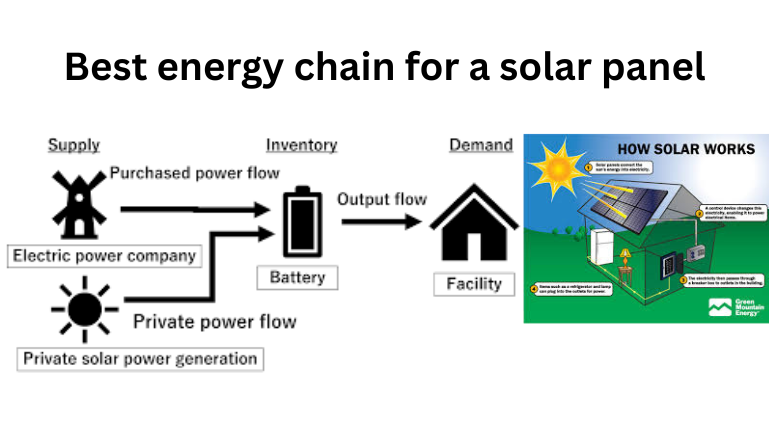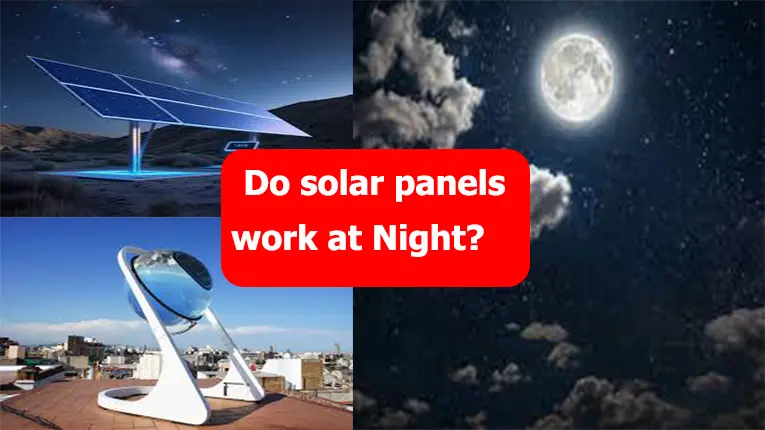The necessary energy chain for a solar panel is inverters, storage, and wiring. How we can discover efficient energy chains, grow solar power performance, and enhance energy efficiency in solar panels.
The sun’s rays come and shine on the solar panel. The solar panel converts these rays into electricity. This electricity reaches our home by wire. We can store electricity in the batteries for later use. The inverter can convert current according to our device. These parts all help us to decrease the pollution.
How Does an Energy Chain for a Solar Panel Work?

The working principles of an energy chain in a solar panel system are:
Cable Protection: The energy chain houses and organizes the cables, preventing them from getting damaged.
Smooth Movement: As the solar panels select their position to track the sun, the energy chain moves along with them, ensuring the cables flex properly.
Efficient Power Transmission: The energy chain ensures that power and data cables remain functional and intact, reducing energy losses.
Easy Installation & Maintenance: Many modern energy chains are designed for quick installation and require minimal maintenance.
Cost of the Best Energy Chain for a Solar Panel
The cost of solar energy panels is different according to their material.
There are costs of some different solar panels in 2025:
Plastic Energy Chains: its cost is $50 to $150 per unit. It is suitable for small solar systems and small purposes.
Reinforced Polymer Energy Chains: Its cost is $150 to $250 per unit. It is perfect for a medium solar system.
Heavy-Duty Metal Energy Chains: The cost of heavy-duty metal energy chains is $300 to $550. Actually, the total cost of the energy chain depends on the solar energy panel.
So the performance of a cheaper energy chain for solar panels is low. It can reduce the efficiency of working.
Power Conditioning and Conversion: Most of the appliances and grid systems produce alternative current (AC). While solar panels produce direct current (DC). So that investment is very important for solar panels.
Grid Connection and Power Distribution: In the grid system, excess electricity can be fed into the power grid. The user can get credit from these grids.
Smart Meters: Track energy production and count usable numbers of units.
Bi-Directional Inverters: There are two types of inverters, but in solar panels, the bi-directional inverter is used between the solar panel and the grids.
Power Systems: Cables will be used for power distribution systems.
Energy Utilization and Load Management
First the electricity is produced; it will be converted and stored in different devices like batteries. Then we used it for a different purpose. Efficient energy utilization involves smart load management to maximize solar power usage and minimize reliance on the grid.
Methods of Energy Utilization:
Direct Consumption: Power systems produce electricity directly.
Battery Discharge: Use only storage energy when the solar panel is enough.
Grid Export: Send the access to the grid for credit and revenue.
Smart Load Scheduling: Use high-energy-consuming devices like water heaters and machines when the solar panels produce the maximum amount of energy.
Environmental and Economic Impact
Solar energy panels have significant environmental and economic benefits.
Environmental Benefits
Reduces Carbon Emissions: Solar energy panel do not produce greenhouse gases.
Minimizes Fossil Fuel Dependency: Decreases reliance on non-renewable energy sources.
Economic Benefits
Lower Electricity Costs: The monthly bill will be reduced.
Return on Investment: It is an investment because it pays for itself over time through energy savings.
Energy Storage System Types
High-performance battery packs with a long lifespan and a high depth of discharge are recognized as lithium-ion batteries.
Lead-Acid Batteries: Low-cost battery packs with a shallower emission depth and a shorter lifespan.
Scalable batteries that conserve electricity in liquid electrolytes are called flow batteries.
Sodium-Ion Batteries: A modern technology that holds the potential for sustainable and cost-effective energy storage.
Energy Storage Guidelines (Battery Integration)
Properly Scale the System: Make sure your energy storage device requirements are satisfied by the size of the
Select the Suitable Battery Type: Choose one battery type depending on your spending limit and energy demands.
Keep an eye on and maintain the system: To ensure peak results, regularly inspect and maintain the energy storage system.
Challenges and Future Innovations
Even though solar energy is groundbreaking, there are still issues:
Resource Intensity: There are environmental consequences associated with mining silicon and rare metals.
Recycling: Efficient measures for recycling utilized panels are being developed.
Grid Compatibility: Large-scale integration of renewable sources is difficult for aging infrastructure.
Does temperature affect the efficiency of solar panels?
Yes, the temperature affects the efficiency of solar panels.
Can we use solar energy panels for heating appliances or not?
Yes, we use solar energy panels for the heating system.
How do we use the energy chain for solar panels?
The equipment changes the solar energy into electricity from the solar panel to final power delivery.
Conclusion
In 2025, for buying an energy chain for a solar panel, first we should check the cable, solar panel movement, and cost. Because high quality protects these things.

